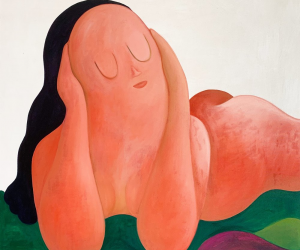
Catherine Hyland – Sumos
Posted by Fabio 23 November 2018
How does a landlocked country with a population of 3 million manage to maintain its identity against the hyper-nationalism of neighbours like Russia, China and Japan? This is the question posed in Sumos, a project that focusses on Mongolia’s astonishing success at Sumo Wrestling.
Between 2003 and 2014, the country dominated sumo, providing successive champions, (or yokozuna in Japan). It’s a success that has made sumo wrestling a path to fame, riches and a particular kind of glory for young boys in Mongolia, a tough, yet climatically fragile land of 3 million.
All the boys filmed now live in Ulaanbaatar, the nation’s capital, and many of them are from families who have recently migrated to the capital to survive the disastrously cold winters that have devastated the herds of livestock they once tended to survive. The resulting influx of people has changed the geographic landscape of the city into a patchwork quilt of Soviet-era tower blocks and parcels of land filled with the gers (or yurts) of recent migrants to the city.
These changes are causing economic and environmental changes to the city (UlaanBataar has some of the worst spikes in air pollution in the world), but despite this the city still remains a major source of combatants for the Japanese sumo wrestling industry.
“Once a Japanese reporter visited and was astonished,” says Batbayar. “He said it’s very weird how in Ulaanbaatar a little over one million people reside, and that all the great Mongolian Sumo wrestlers are basically from the same neighborhood. It was then that I realized that it was very weird how a few kids from the countryside who had a mere interest for the sport could be dominating Sumo champions.”
If the first step in becoming a sumo champion is, as Batbayar puts it, “…crawling in the sheep enclosure, carrying ice, chopping firewood, riding horses,” the training camp is the second place. Succeed there and what lies beyond are the hard rigours of life in Japan, with constant training, limited communication with family from home and the need to become fluent in Japanese. Before that happens though, you need to really prove yourself as a wrestler before you can even train in Japan.
“Nowadays there are regulations in place for the 50 Sumo schools in Japan that regulates the amount of foreigners one school can hold at once, which is at this time 1 foreign student per school,” says Batbayar. “This is why many kids who have the spirit and the skill it takes to be a very good Sumo wrestler can’t get in, as you also need to be a certain age. I believe that if we were to ignore these regulations and took the best skilled and the hardest working from all 21 districts of Mongolia the top 20 best wrestlers would be Mongolian.”
Colin Pantall, British Journal of Photography








